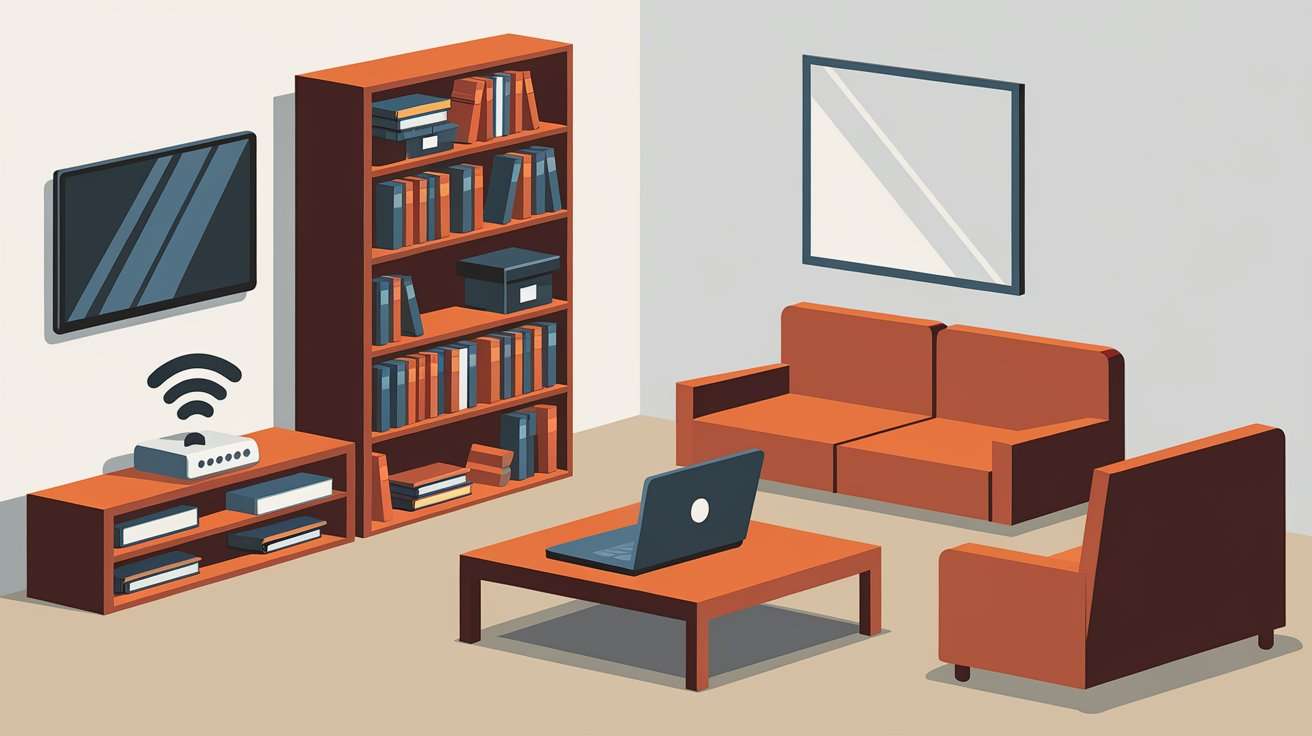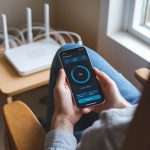Wi-Fi Dead Zones
Wi-Fi dead zones are those frustrating spots in your home where the Wi-Fi signal either drops out completely or is too weak to be usable. Dead zones are common, but there are ways to address them to ensure uninterrupted connectivity throughout your space. This post explains Wi-Fi dead zones and provides detailed solutions for fixing them, ensuring that every corner of your home has a reliable connection.
1. What Causes Wi-Fi Dead Zones?
Understanding what creates dead zones in the first place is essential. Some of the most common causes include:
- Obstructions: Thick walls, floors, and other physical barriers can block Wi-Fi signals, causing dead zones.
- Interference from Other Devices: Appliances like microwaves, cordless phones, and even baby monitors can interfere with Wi-Fi signals.
- Distance from the Router: The farther you are from your router, the weaker the signal, especially if you’re separated by walls or floors.
2. Place Your Router Strategically
The location of your router is one of the biggest factors in dead zones. Placing your router centrally in your home can help extend coverage evenly.
Router Placement Tips:
- Position the router in an open area with minimal obstructions.
- Avoid placing it near metal objects, thick walls, or electronic devices that could interfere with the signal.
- If you have a multi-story home, try to place the router on the top floor or middle level to extend the signal’s reach.
3. Use a Wi-Fi Extender or Repeater
A Wi-Fi extender or repeater can help eliminate dead zones by extending the reach of your current network.
How Extenders Work:
- Wi-Fi extenders capture your router’s signal and rebroadcast it to cover areas with weak connectivity.
- Place the extender midway between your router and the dead zone for optimal results.
4. Switch to a Mesh Wi-Fi System
For larger homes or spaces with multiple floors, a mesh Wi-Fi system may be the best solution. Unlike traditional routers, mesh systems use multiple nodes spread throughout your home to create a seamless, robust network.
Mesh Wi-Fi System Benefits:
- Provides strong, consistent Wi-Fi coverage throughout the entire home.
- Reduces dead zones and areas of weak signal.
- Offers easy setup and can be expanded by adding more nodes if necessary.
5. Reduce Interference from Other Devices
Certain devices, particularly those that emit radio waves, can cause interference with Wi-Fi signals, leading to dead zones. Common culprits include microwaves, cordless phones, and baby monitors.
How to Reduce Interference:
- Keep your router away from these types of devices to minimize interference.
- Use a 5GHz frequency if your router supports it, as this band is less likely to be affected by interference.
- Consider upgrading to a dual-band or tri-band router to manage interference more effectively.
6. Upgrade to a Router with Better Range
Older routers may not provide sufficient range to cover an entire home, especially if it’s a larger space. Upgrading to a newer model with improved range and performance can help minimize dead zones.
Choosing a New Router:
- Look for models that support Wi-Fi 6 for faster speeds and better range.
- Choose a router that supports both 2.4GHz and 5GHz frequencies to balance distance and speed.
- Check customer reviews to ensure the router performs well in larger homes or spaces with multiple walls.
7. Adjust Your Router’s Antennas
If your router has adjustable antennas, angling them can help direct the signal toward problem areas.
Antenna Positioning Tips:
- Position antennas vertically for horizontal coverage across a single floor.
- If your dead zones are on a different floor, angle one antenna horizontally to push the signal between levels.
- Experiment with different angles to see which setup reduces dead zones most effectively.
8. Change Your Wi-Fi Channel
Routers typically broadcast on channels that can become congested, especially in densely populated areas with multiple overlapping networks. Changing your Wi-Fi channel can help reduce interference, resulting in fewer dead zones.
How to Change the Channel:
- Access your router’s settings through its IP address.
- Navigate to the Wi-Fi settings and try switching to channels 1, 6, or 11 for a 2.4GHz network, which are often less congested.
- Check signal strength after each change to find the best option for your area.
9. Use a Powerline Adapter
Powerline adapters can extend Wi-Fi coverage by using your home’s electrical wiring to transmit data. These are especially useful if you have thick walls or long distances between your router and dead zones.
How Powerline Adapters Work:
- Plug one adapter into an outlet near your router and connect it with an Ethernet cable.
- Plug the second adapter into an outlet near the dead zone, where it will transmit the network via Wi-Fi or Ethernet.
10. Perform a Site Survey
A Wi-Fi site survey involves analyzing your network to determine where dead zones are and identify the best places to position your router or extenders. You can use apps or tools to perform a survey and make adjustments based on the results.
Site Survey Tools:
- Wi-Fi Analyzer (for Android) and NetSpot (for iOS and desktop) can help map your network and highlight areas with weak or non-existent Wi-Fi.
- Use the tool to test signal strength in various parts of your home and move your router or extenders accordingly.




Pingback: How to Fix Wi-Fi Signal Drops Throughout Your Home - Gadget Fixers
Pingback: Boosting Wi-Fi Signal in Large Homes: Tips and Solutions - Gadget Fixers
Pingback: Resolving Wi-Fi Black Spots in Your Home 2025 - Gadget Fixers
Pingback: How to Eliminate WiFi Dead Zones: WiFi dead zone detector - Gadget Fixers